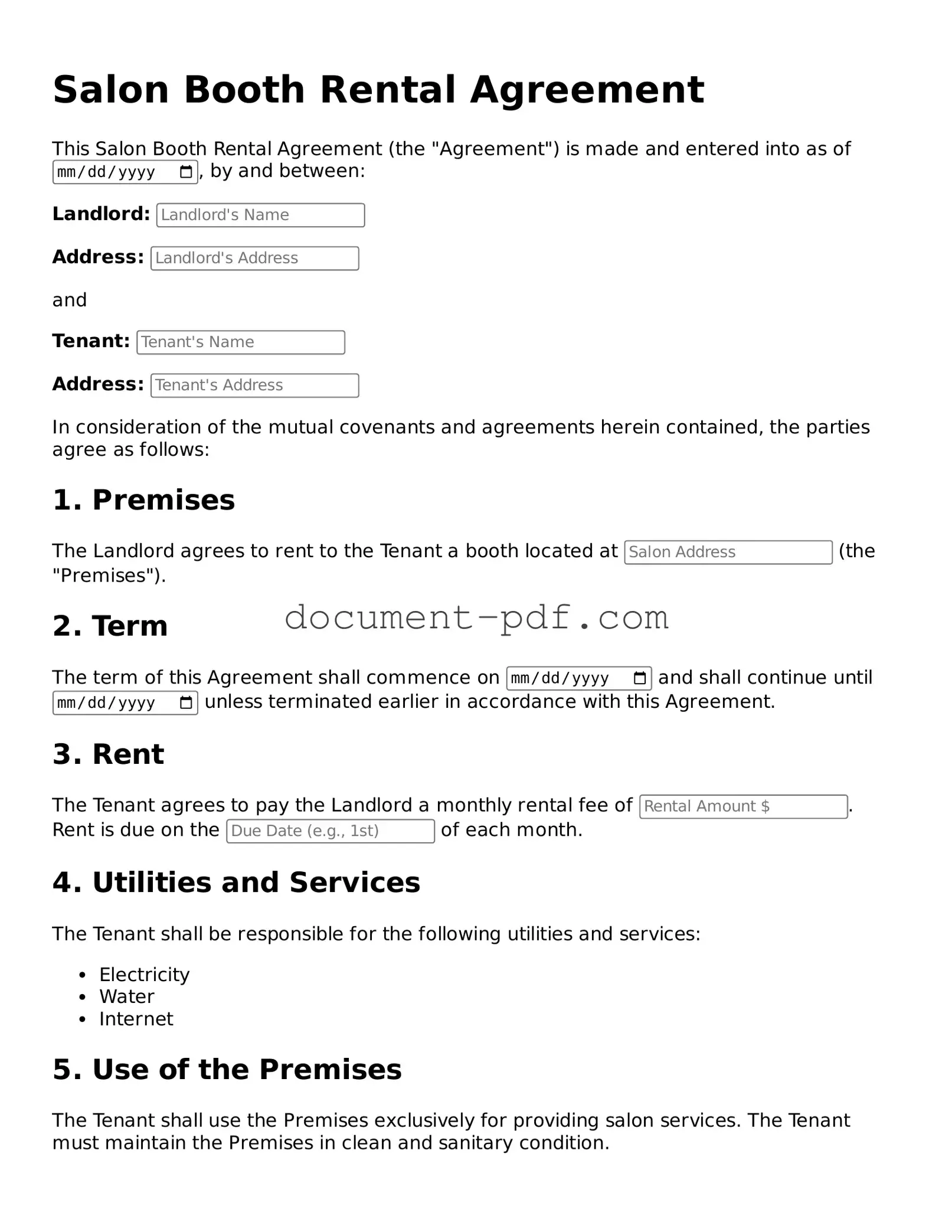Attorney-Approved Salon Booth Rental Agreement Document
A Salon Booth Rental Agreement is a legal document that outlines the terms and conditions between a salon owner and a stylist renting a booth within the salon. This agreement helps establish clear expectations regarding rent, responsibilities, and the use of shared spaces. Understanding this form is essential for both parties to ensure a smooth and professional working relationship.
Ready to get started? Fill out the form by clicking the button below.
Access Salon Booth Rental Agreement Editor Here
